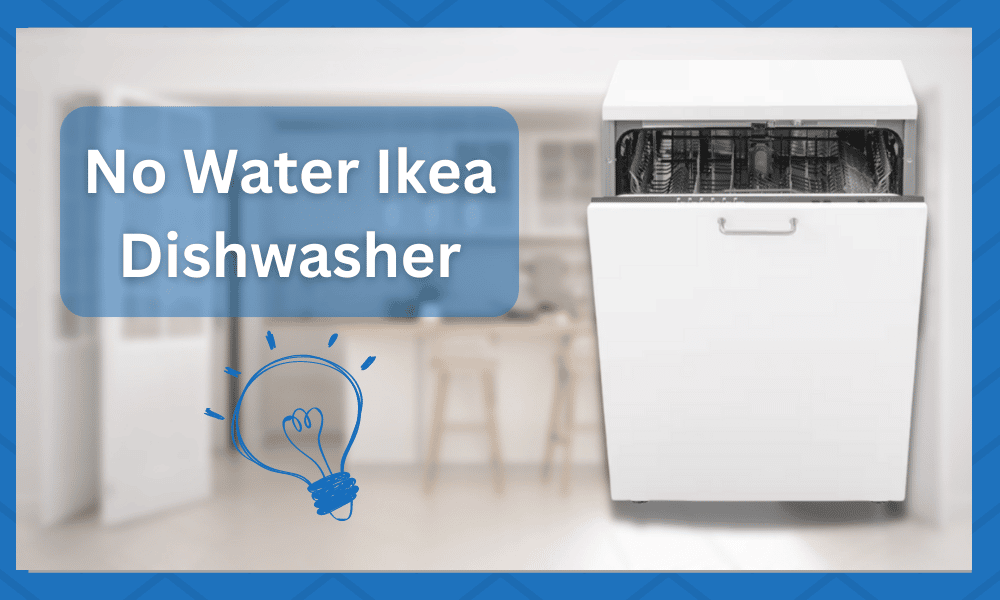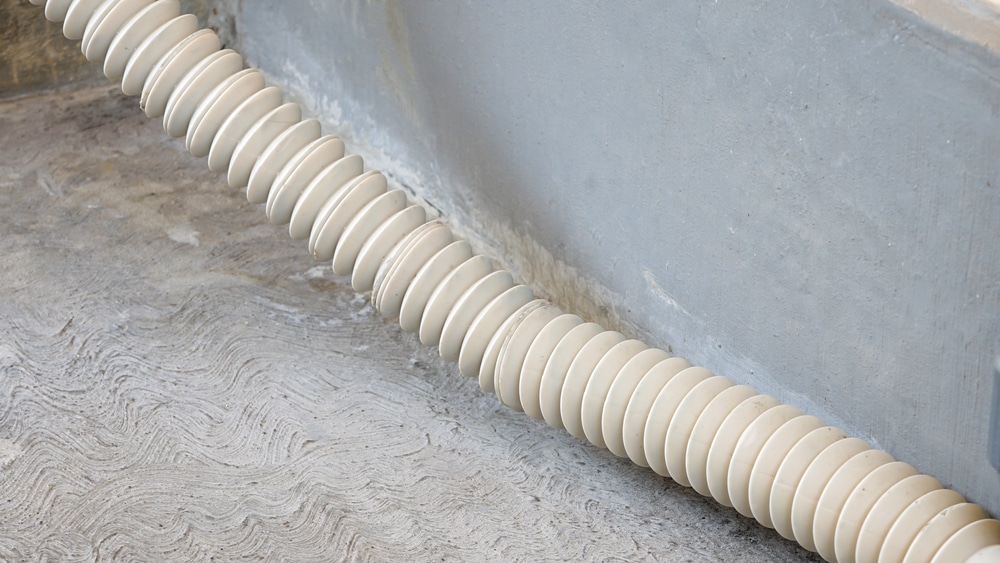
Having a dishwasher at home is a lifesaver. It is not just an appliance but a personal helper and a trustworthy sanitizer for your dishes.
It saves you plenty of time and keeps the kitchen tidy with all the dishes hidden behind the door.
It allows you to enjoy the biggest get-together without worrying about the dirty glasses, plates, and other dishes in your kitchen.
However, with all the benefits it extends, it has some major cons too. The famous IKEA dishwashers are not known for their water-saving capabilities.
Many IKEA dishwasher models use significantly more water than other brands. An IKEA dishwasher is not the best choice if you’re looking to save water.
Many IKEA models use considerably more water than other brands. This means they’ll eventually cost you more water and electricity bills.
But one has to compromise on a few things to get what makes like a little easier. With the Ikea dishwasher, you’ll save time, and your dishes will be as clean and sparkly as new.
The IKEA dishwasher not dispensing water is a common problem faced by the dishwasher user.
If your IKEA dishwasher is also not dispensing water, troubleshoot the issue to determine the cause and get it corrected.
In most cases, you’ll be able to fix the problem yourself without having to call a maintenance specialist.
There could be several reasons why your IKEA dishwasher is not dispensing water.
The 3 most common reasons why this issue occurs include the following:
- Something is blocking the dishwasher’s water inlet valve.
- The dishwasher’s water inlet valve is defective.
- The dishwasher is not getting enough water supply.
If your IKEA dishwasher is not dispensing water, and you have a pile of dishes on your kitchen counter, don’t panic.
Here in this article, we will explain how you can fix it with a few easy steps to get the dishwasher working again!
No Water IKEA Dishwasher
- Check Main Water Supply and Clear Water Valve
First, check to ensure the dishwasher’s water supply is turned on. To work properly, the inlet valves require around 200 pounds of water pressure per square inch.
If the main water supply’s pressure is too low, your dishwasher will not fill with water. You can also check the main water line for any damages, leakages, and obstructions.
If the main water supply has adequate water flowing, the next most likely possibility is that the water inlet valve is not opening properly.
The water valve in the dishwasher is where the water enters the dishwasher.
This valve controls water flow into the dishwasher; if it is not functioning properly, no water will enter it. Knowing what’s causing the inlet to not function properly is necessary to address the issue.
It could be clogged or defective, preventing the water supply from entering the appliance.
Although you can clean the clogged water inlet to return to the normal water flow, it is not recommended due to part failure risk after repair.
So the best way to solve your issue, considering your defective inlet water valve, is to replace it with the new one.
- Clean The Filter
If your main water supply is sufficient on inspection, and the dishwasher’s water inlet valve is clear and not the problem source, then the next most likely possibility is that the dishwasher’s filter is clogged.
The filter traps food and dirt particles from the water, and over time it can become clogged, restricting water flow into the dishwasher.
For this reason, it is always suggested to properly remove the leftover food from your plates and other utensils and rinse them before putting them in the dishwasher so you can prevent the filter from clogging up.
To clean the filter, you would first have to locate it. Slide the bottom tray of the dishwasher out. You can pull it out and keep it aside if it’s coming your way.
The filter is located somewhere in the center on the bottom, and its position, although fairly typical in almost all dishwashers, may differ slightly from model to model.
To remove the filter, rotate the uppermost mesh assembly counterclockwise and pull it straight out.
Under the mesh filter is a coarse filter that needs to be cleaned, too, and the inlet is inspected for any food particles and bones. Afterward, thoroughly wash your filter with warm soapy water and install it back.
- Drain Line Obstruction
Another possibility is an obstruction in the dishwasher’s drain line. If water cannot properly drain out of the dishwasher, it will eventually back up and cause the dishwasher to stop dispensing.
In such circumstances, clearing the drain line obstruction will drain the water productively, and your Ikea dishwater will start dispensing water for its regular wash and rinse cycle.
To clear a drain line obstruction, you will need to remove the dishwasher’s drain line, inspect it thoroughly and then clear any debris blocking the water from flowing outwards.
It’s advocated to check the drain line after clearing it by manually letting the water flow through it to see if the drainage system has resumed working normally.
If blocked water drainage was the sole reason causing your dishwasher to not dispense water, then clearing it thoroughly will solve your issue.
- Check Drain Hose
Another reason for your dishwasher not dispensing water is a clogged drain hose. If your drainage line is clear, you must inspect the drain hose, which directs the waste water out of the dishwasher.
Many times, specifically when the dishwasher is used routinely and not cleaned, the drain hose gets clogged with food remains. You may even experience a musty smell when you open the dishwasher door.
If the drain hose is clogged or faulty, the dishwasher will not drain the effluent properly, which will halt the water dispensing more water in the dishwasher to prevent any overflowing issues.
The problem may be with the drain hose clogged or bent. In any way, it could block the water flow into the dishwasher. So it makes it necessary for you to address whatever the issue is with the hose.
Inspect the hose, and unclog it using water and dishwasher cleaning salt. You can also attempt to straighten it out if necessary. However, In case of any damage to the hose, you will need entirely to replace it.
- Check the Water Float Switch
Another potential reason no water is flowing into your IKEA dishwasher is that the float switch is not working properly.
The float switch is in the dishwasher’s tub and is responsible for shutting off the water flow when the tub is filled with water till its maximum requirement to stop the water from overfilling.
If the float switch is not working, water will continue to fill the tub and eventually overflow, or a malfunctioning float switch may prevent the dishwasher from filling.
To check if the water float switch crashed, use a multimeter to assess the continuity, which will ascertain if there is a continuous electrical path present in the switch.
A faulty water float switch that shows no electrical signal continuity should be replaced with a new one.
- Replace Defective Pump
If the water supply is turned on, and all your inlets and outlets are clean and clear, the problem may lie with the dishwasher’s pump.
The pump is responsible for circulating water throughout the dishwasher; if it is not working properly, water will not be distributed evenly, and hence the dishwasher may either overload the water or not dispense it.
In the latter case, the defective pump will not allow water to flow inwards. Fix a defective pump; unfortunately, there are no easy methods, so you will need to replace it with a new one.
Replacement is recommended as repairing may solve your issue temporarily, but it can run into failure again.
so be on a safer side, and replace it!
Prevent The Problem of No Water in the Dishwasher
One way to help prevent these problems is to regularly clean the dishwasher’s filters. The filters keep the dishwasher’s water passages clear; if they become clogged, they can impede water flow into the dishwasher.
To clean the filters, remove them from the dishwasher and wash them with hot water and soap.
You should also regularly clean the dishwasher’s drain line to prevent it from becoming blocked.
Another important thing to remember is that the dishwasher needs a constant water supply. If the pressure is low, it could cause the dishwasher to not fill up with water.
Consider increasing the water pressure in your home for your dishwasher to work efficiently.
The dishwasher’s float switch is the last thing you should take care of.
If the float switch is not working properly, water will continue to fill the dishwasher and may eventually overflow. Consider replacing the float switch with a new one.
These preventive measures can help keep your IKEA dishwasher running smoothly for years to come.





